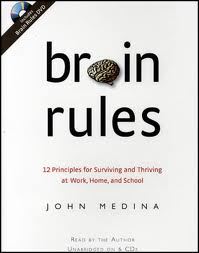The entrepreneur
creates a model i.e. a solution to the frustrations of customers.
Adrian Slywatsky in Demand
discusses necessities for successful products.
Demand creators:
1.
Make it
magnetic - A product needs to appeal to our cat brain. It needs generate emotion, or even addiction
(caffeine, nicotine). The Mac is shiny
and clean. Our cat brain (limbic) makes decisions and our human brain (cerebral
cortex) uses selective distortion, selective retention, and motivated reasoning
to justify that decision. Our rational brain is like a lawyer making a case.
2.
Solve
hassles - The hassle map illustrates this.
On Healthcare Slywatsky discusses a successful Medicare HMO called
Caremore.
 3.
The
backstory - what you don’t see that
makes the product work. ITunes for the
iPod is an example.
3.
The
backstory - what you don’t see that
makes the product work. ITunes for the
iPod is an example.
4.
Find the
triggers. What gets people to
actually buy a product? For Nespresso it
is seeing a demonstration and then tasting the product. I tried this and the
demonstration is impressive.
5.
Build a
steep trajectory - Keep improving
the product to stay ahead of competition.
Generic capsules for Nespresso were just OK’d by a European judge
6.
De-
average - segment your market. Make
tea for tea drinkers and coffee for coffee drinkers. Know your demographics and
psychographics.
Back to Gerber’s E-myth.
Businesses have 3 employee types.
 1. The entrepreneur focuses on how must the
business work as a system for generating demand and producing results for the
customer thus generating profits. The business
is viewed as a whole, modeled after a future vision. It is less important what is done than the
process of how it is done. It’s not the
commodity, but the delivery. How does my
business look to the customer? All work
must be documented in operations manuals.
1. The entrepreneur focuses on how must the
business work as a system for generating demand and producing results for the
customer thus generating profits. The business
is viewed as a whole, modeled after a future vision. It is less important what is done than the
process of how it is done. It’s not the
commodity, but the delivery. How does my
business look to the customer? All work
must be documented in operations manuals.
2. The manager organizes the technicians and
maintains the status quo often engendering conflict with the changing vision of the entrepreneur. A people
strategy is developed to communicate purpose, standards, and demand accountability to and of the employees. Gerber’s manager creates a role for the technicians
in a game. The game requires victories to keep people involved and the game can
never end.
 3. The technician - does what work needs to be done to produce
results to generate income. He looks at
the business as a sum of parts modeled in the present. Gerber says that people with the lowest level
of skill to fulfill their function should operate your business. The
critical step is determining what you really need. Using low cost employees often goes against
conventional wisdom as described by Michael Lewis in his book Moneyball.
3. The technician - does what work needs to be done to produce
results to generate income. He looks at
the business as a sum of parts modeled in the present. Gerber says that people with the lowest level
of skill to fulfill their function should operate your business. The
critical step is determining what you really need. Using low cost employees often goes against
conventional wisdom as described by Michael Lewis in his book Moneyball.
Gerber notes that Business depends on
Innovation -which
is trying new things.
Quantification -
Does wearing a different color increase sales
Everything should be quantified. Michael Lewis describes in Moneyball how
critical it is to see which factors make a difference
Orchestration-
after something is found to be an improvement all discretion is
eliminated.
It is only recently that corporations have adopted this as the
Lean management process.






